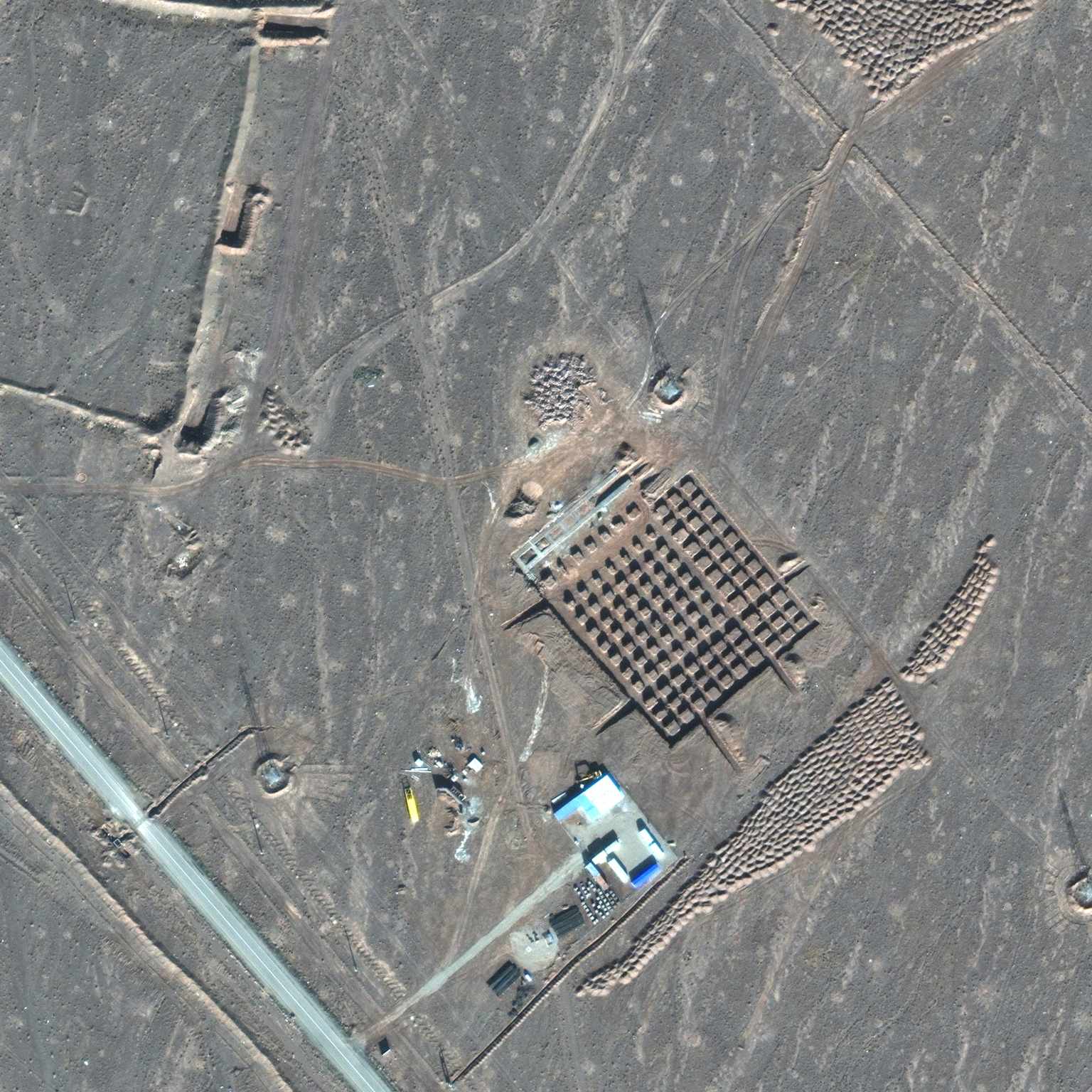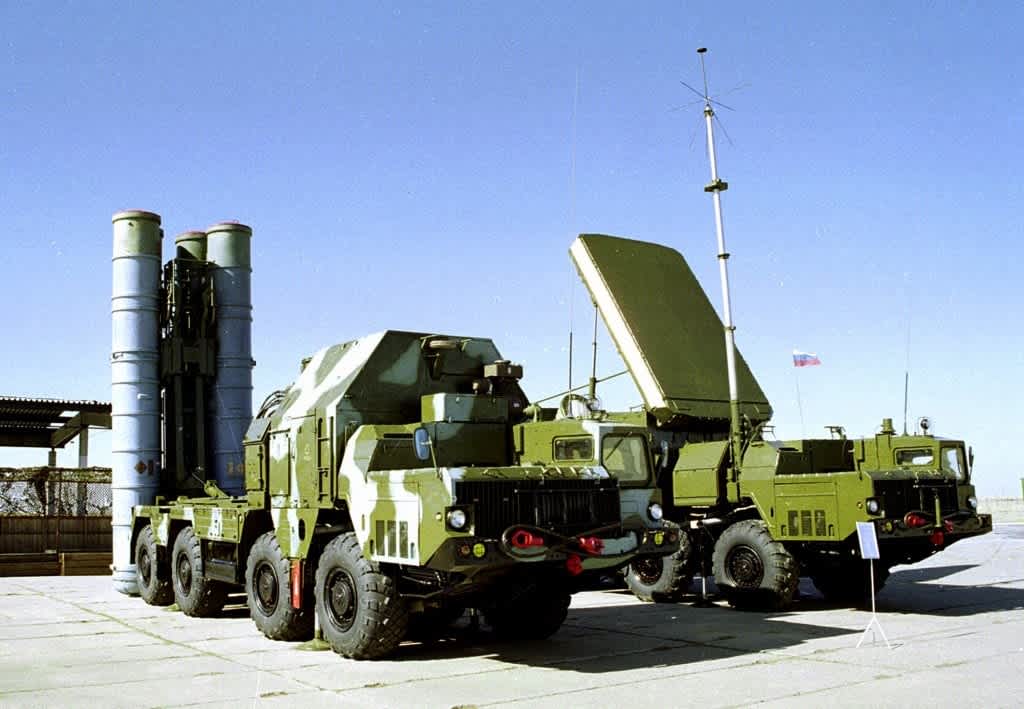The Fordow Fuel Enrichment Plant represents one of Iran’s most strategically significant and heavily defended nuclear sites, located approximately 30 kilometers northeast of the city of Qom 12. Buried deep beneath a mountain, this subterranean fortress has become a focal point in discussions about Iran’s nuclear capabilities and the potential challenges of neutralizing such a facility 34.

Aerial view of the Fordow nuclear facility in Iran, situated within a mountainous desert landscape.
Strategic Importance of Fordow
The Fordow facility, officially referred to as the Shahid Ali Mohammadi Nuclear Facility in Iran, was initially established as a military installation for the Islamic Revolutionary Guard Corps before transitioning to a nuclear facility 12. Construction began around 2006, but its existence was only disclosed to the International Atomic Energy Agency (IAEA) in 2009, after Western intelligence services had already identified it 23.
Its main operational areas are estimated to be located 80 to 90 meters (approximately 262 to 295 feet) underground, rendering it immune to most conventional aerial munitions 53. This depth provides natural protection against aerial attacks, making it one of the most resilient nuclear facilities in Iran’s arsenal 46.
The IAEA has reported that the Fordow site can accommodate up to 2,976 centrifuges, a fraction compared to the approximately 50,000 centrifuges at Natanz 14. However, its significance lies not in quantity but in capability – it is the only Iranian site where IAEA inspectors have detected uranium particles enriched to levels close to weapons-grade purity 17.

An aerial view of the Fordow nuclear facility, showing its distinctive grid-patterned underground structures and surrounding arid landscape.
The S-300 Shield: Russia’s Elite Air Defense System
In 2016, Iran placed Russian S-300 air defense systems above the Fordow facility, signaling concerns about potential air strikes 18. These advanced surface-to-air missile systems represent a significant upgrade to Iran’s air defense capabilities and pose a formidable challenge to any aircraft attempting to penetrate Iranian airspace 910.
The S-300 system is a series of highly capable, long-range surface-to-air missile complexes first deployed by the Soviet Union in 1979 and subsequently modernized by Russian forces 911. Iran specifically received the S-300PMU2 Favorit variant (known to NATO as the SA-20B Gargoyle), which was introduced in 1997 and features improved anti-ballistic missile capabilities 1012.

Components of a Russian S-300 air defense system, including a missile launcher and a radar vehicle, displayed outdoors.
Components and Capabilities of the S-300
The S-300 system is not a single unit but rather an integrated network of multiple components working in concert to detect, track, and engage aerial targets 1113. Each S-300 battery typically includes several key elements that enable its formidable defensive capabilities 914.
At the heart of the system is the command vehicle that provides central command and control, comparing data received from various targeting radars to filter out false targets 1113. The system features both active and passive target detection modes, enhancing its ability to identify threats in various environments 1115.
Large phased-array radars form the backbone of the system’s detection capabilities, with the primary surveillance radar, codenamed “Big Bird” by NATO, capable of detecting targets at ranges up to 300 kilometers 916. This early warning capability gives the defenders precious time to coordinate their response to incoming threats 1417.
The S-300PMU2 missile system uses the 48N6E2 missile, which has a range of up to 200 km and can reach altitudes of 27 km 1814. These missiles travel at speeds between Mach 6-8.5, making them extremely difficult to evade once launched 1819.

Diagram illustrating the distributed components and operational layout of an S-300 series air defense system, including its various radar and launcher units.
Iran’s Layered Air Defense Network
The S-300 systems at Fordow do not operate in isolation but form part of a comprehensive, multi-layered air defense network that covers much of Iran’s territory 2021. This network integrates various systems of different ranges and capabilities to create a robust defensive shield 2216.
In recent years, Iran has built several new indigenous air defense systems to complement its imported Russian technology 2023. These include the Bavar-373, which Iran claims is comparable to the Russian S-300 and even more advanced in some aspects 2321.
Iran’s air defense network employs a combination of radar, optics, thermal sensors, lasers, and acoustics in its detection systems 2324. This integration has eliminated blind spots, enabling the detection of even stealthy and slow targets 2322.

Map showing the geographical distribution of Iran’s air defense radar network across its territory.
Geographical Distribution of Air Defenses
Iran has strategically positioned its air defense systems to protect key facilities and create overlapping coverage zones 2524. The S-300 systems at Fordow represent one of the most critical deployments, given the facility’s significance to Iran’s nuclear program 626.
Beyond Fordow, Iran has established air defense bubbles around other nuclear sites, military bases, government facilities, and critical infrastructure 2712. These defensive rings create multiple layers that any attacking force would need to penetrate 2217.
The positioning of these systems takes advantage of Iran’s diverse geography, with some sites like Fordow benefiting from natural protection provided by mountainous terrain 36. This combination of natural and technological barriers makes Iran’s key sites particularly challenging targets 2628.

Map depicting the estimated coverage of Iran’s SA-20c and SA-5 long-range air defense systems across strategic locations.
The Challenge of Penetrating the S-300 Shield
The S-300 system presents several formidable obstacles to any aircraft attempting to penetrate its defensive envelope 1913. Its high mobility allows it to relocate quickly after firing, making it difficult to target even if its position is temporarily compromised 2930.
The system’s advanced radar capability can detect targets at impressive ranges, with the ability to track multiple targets simultaneously 911. The S-300PMU2 variant operated by Iran reportedly possesses radars that can detect upwards of 200 targets while simultaneously engaging up to six targets 1112.
For stealth aircraft, the challenge is particularly acute, as the S-300’s multiple radar bands and frequencies can potentially detect even low-observable platforms under certain conditions 1415. This capability forces attackers to employ complex electronic warfare and suppression tactics 1931.
Potential Tactics for Penetrating S-300 Defenses
A realistic mission against S-300 defenses would likely involve multiple specialized aircraft performing different roles 3117. This would include electronic warfare platforms to jam radar signals, suppression of enemy air defense (SEAD) aircraft armed with anti-radiation missiles, and strike aircraft to deliver ordnance on target 1931.
Standoff weapons, launched from beyond the range of the S-300 system, represent one approach to attacking defended targets 2924. However, the deeply buried nature of the Fordow facility makes this tactic less effective without specialized bunker-busting munitions 2628.
Low-altitude penetration attempts to exploit the limitations of radar coverage near the ground, though the S-300 has been designed specifically to counter this tactic 3132. Modern S-300 variants are capable of engaging targets flying as low as 10 meters above ground 1124.
Electronic warfare plays a crucial role in any attempt to defeat advanced air defenses 3117. Techniques include jamming radar frequencies, deploying decoys to confuse tracking systems, and using anti-radiation missiles to target radar emitters 1932.
Recent Military Developments
In recent years, various militaries have developed tactics specifically designed to counter the S-300 threat 1033. Israel has reportedly trained against S-300 systems operated by Greece during multinational exercises, refining its approach to defeating such defenses 1033.
Recent conflicts have provided real-world tests of the S-300’s capabilities and vulnerabilities 1029. Reports from October 2024 suggest that Israeli strikes were able to neutralize some Iranian S-300 systems, demonstrating that while formidable, these defenses are not impenetrable 1029.
The deployment of fifth-generation stealth aircraft like the F-35 has changed the calculus of air defense penetration 1929. These aircraft combine low observability with advanced electronic warfare capabilities and sensor fusion to increase survivability in contested environments 1924.
Strategic Implications of Fordow’s Defenses
The S-300 deployment at Fordow reflects Iran’s strategic assessment of the facility’s importance and vulnerability 123. Despite Iranian authorities having lauded the facility for its “invulnerability” due to its underground construction, the addition of advanced air defenses suggests recognition of potential aerial threats 126.
The presence of such advanced air defenses complicates military planning for any nation considering strikes against Iran’s nuclear facilities 334. Some analysts argue that without specialized capabilities, such as the American GBU-57 Massive Ordnance Penetrator carried by B-2 stealth bombers, successfully neutralizing the Fordow facility would be extremely challenging 2635.
The S-300 shield around Fordow has significant implications for regional security dynamics and diplomatic negotiations regarding Iran’s nuclear program 428. The defensive barrier raises the costs and risks of military action, potentially strengthening Iran’s negotiating position in international discussions 135.
Conclusion
The S-300 air defense system protecting the Fordow nuclear facility represents one of the most formidable challenges to air operations in modern military history 911. Its combination of advanced radar technology, high-speed missiles, mobility, and integration into a larger air defense network creates multiple layers that any attacker would need to overcome 1424.
While no defense system is truly impenetrable, the combination of the S-300 shield and Fordow’s underground construction presents a uniquely challenging target 334. This reality has profound implications for military planning, strategic calculations, and diplomatic efforts related to Iran’s nuclear program 2835.
As military technology continues to evolve on both offensive and defensive fronts, the contest between air defense systems like the S-300 and the platforms designed to defeat them will remain a critical aspect of modern warfare and strategic deterrence 2924. The Fordow facility stands as a testament to this ongoing technological chess match and the complex security challenges of the 21st century 434.
Footnotes
-
https://www.aljazeera.com/news/2025/6/19/what-is-irans-fordow-nuclear-facility-and-could-us-weapons-destroy-it ↩ ↩2 ↩3 ↩4 ↩5 ↩6
-
https://en.wikipedia.org/wiki/Fordow_Fuel_Enrichment_Plant ↩ ↩2 ↩3
-
https://thehill.com/policy/international/5359296-iran-fordow-nuclear-site-israel-iran-conflict/ ↩ ↩2 ↩3 ↩4 ↩5 ↩6 ↩7
-
https://www.csis.org/analysis/three-things-will-determine-irans-nuclear-future-fordow-just-one-them ↩ ↩2 ↩3 ↩4 ↩5
-
https://www.cnn.com/2025/06/17/middleeast/iran-fordow-nuclear-site-latam-hnk-intl ↩
-
https://www.firstpost.com/explainers/israel-iran-conflict-fordow-heart-iran-nuclear-programme-mountain-13898196.html ↩ ↩2 ↩3 ↩4
-
https://www.cbsnews.com/news/israel-iran-war-fordo-nuclear-site/ ↩
-
https://en.mehrnews.com/news/119321/VIDEO-S300-missiles-deployed-at-Fordow-nuclear-site ↩
-
https://www.twz.com/news-features/israeli-strikes-knocked-out-all-of-irans-s-300-air-defense-systems-officials ↩ ↩2 ↩3 ↩4 ↩5 ↩6
-
https://en.wikipedia.org/wiki/S-300_missile_system ↩ ↩2 ↩3 ↩4 ↩5 ↩6 ↩7 ↩8
-
https://www.fdd.org/analysis/2016/09/01/understanding-irans-deployment-of-the-s-300-system/ ↩ ↩2 ↩3 ↩4 ↩5
-
https://armyrecognition.com/news/army-news/2025/russia-acquires-missiles-for-pantsir-air-defense-system-to-counter-drones-and-aerial-threats-at-ukrainian-border ↩ ↩2 ↩3
-
https://nationalinterest.org/blog/buzz/s-300-air-defense-system-built-attack-nato-fighters-and-bombers-211093/ ↩ ↩2 ↩3 ↩4 ↩5
-
https://www.atlanticcouncil.org/in-depth-research-reports/issue-brief/russian-and-chinese-strategic-missile-defense-doctrine-capabilities-and-development/ ↩ ↩2
-
https://www.jns.org/iran-is-doing-all-it-can-to-rebuild-its-air-defenses/ ↩ ↩2
-
https://en.wikipedia.org/wiki/List_of_equipment_of_the_Islamic_Republic_of_Iran_Air_Defense_Force ↩ ↩2
-
https://www.reddit.com/r/FighterJets/comments/1f0o4x3/penetrating_modern_air_defenses/ ↩ ↩2 ↩3 ↩4 ↩5 ↩6 ↩7
-
https://en.wikipedia.org/wiki/Islamic_Republic_of_Iran_Air_Defense_Force ↩ ↩2
-
https://www.janes.com/osint-insights/defence-news/weapons/iran-claims-to-have-integrated-s-300-components-with-indigenous-bavar-373 ↩ ↩2
-
https://www.washingtoninstitute.org/sites/default/files/pdf/2023-iran-airdefense-systems-table-POL3813-printable.pdf ↩ ↩2 ↩3
-
https://spencerguard.substack.com/p/air-defense-in-the-modern-era-no ↩ ↩2 ↩3 ↩4 ↩5 ↩6 ↩7
-
https://www.timesofisrael.com/iran-displays-russian-made-long-range-air-defense-systems-in-military-exercises/ ↩
-
https://abcnews.go.com/International/wireStory/bunker-buster-bombs-irans-fordo-nuclear-facility-122920121 ↩ ↩2 ↩3 ↩4
-
https://apnews.com/article/bunker-buster-bomb-israel-iran-fordo-fordow-b2-nuclear-8a612cbf16aa0f99bd9992334ffc93d7 ↩ ↩2 ↩3 ↩4
-
https://www.youtube.com/watch?v=g40XcRbOxoE ↩ ↩2 ↩3 ↩4 ↩5 ↩6
-
https://armyrecognition.com/focus-analysis-conflicts/army/conflicts-in-the-world/russia-ukraine-war-2022/russia-repurposes-s-300-surface-to-air-missiles-for-ground-attacks-against-the-city-of-kharkiv ↩
-
https://www.reddit.com/r/hoggit/comments/12ar7hb/realistic_way_to_attack_an_s300_sam_site/ ↩ ↩2 ↩3 ↩4 ↩5
-
https://www.iiss.org/globalassets/media-library---content—migration/files/research-papers/iad-report.pdf ↩ ↩2
-
https://www.timesofisrael.com/israel-used-radar-evading-missile-in-strike-on-iranian-s-300-near-natanz-report/ ↩ ↩2
-
https://nymag.com/intelligencer/article/can-us-destroy-iran-fordow-nuclear-bunker-b2-mop.html ↩ ↩2 ↩3
-
https://www.cbsnews.com/news/massive-ordnance-penetrator-bomb-gbu-57-b-2-bomber-iran-fordo-nuclear-facility/ ↩ ↩2 ↩3